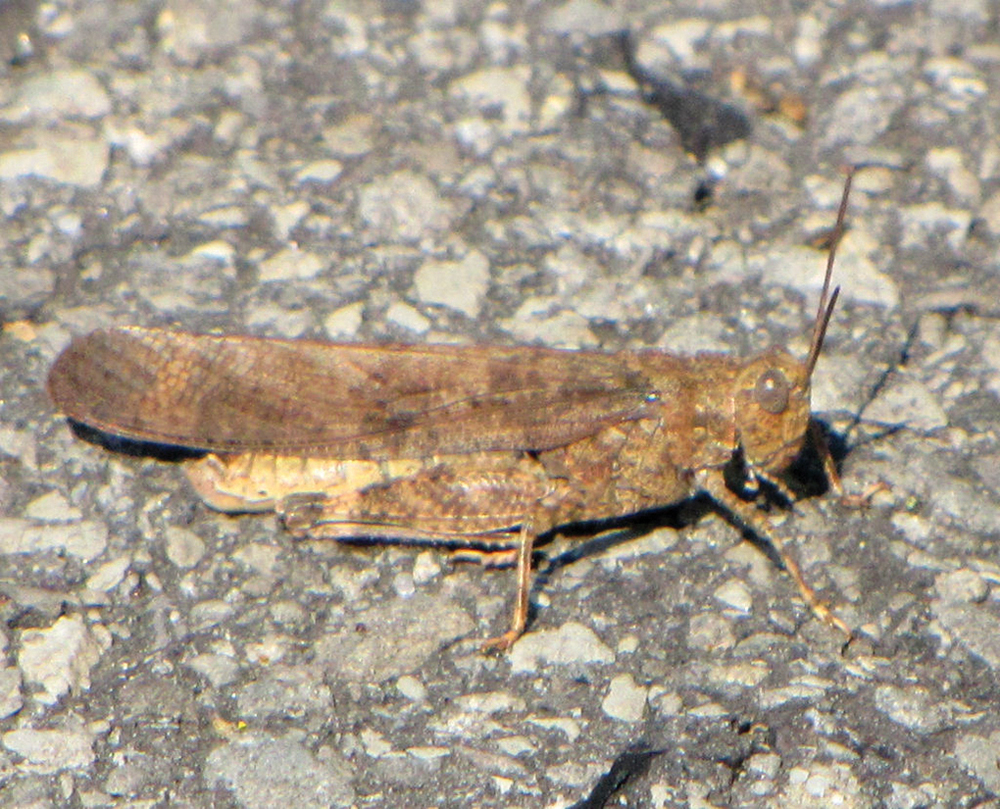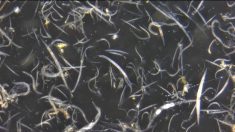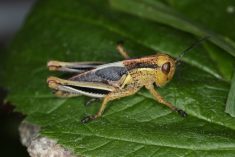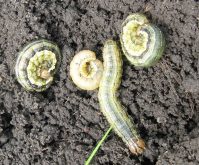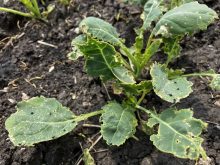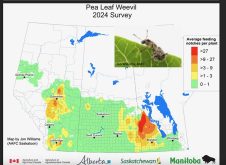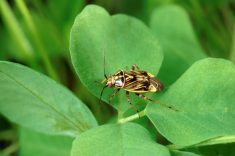One of Manitoba’s best-known insect experts is reminding farmers to be sure of what they’re seeing when they scout.
For example, that “wireworm” problem may not actually be a problem at all.
Therevid larvae (the precursor to a large, hairy fly) are often mistaken for wireworms, provincial entomologist John Gavloski said during a May 22 Crop Talk webinar. In fact, the pale worms are beneficial insects and will feed on wireworms in the soil.
Why it matters: Insect scouting has begun in earnest, but producers may end up overestimating a problem or accidentally killing off beneficial insects that closely resemble a pest.
“They feed on earthworms, cutworms, wireworms,” Gavloski said. “They’re very quick, very good predators. If what you’re finding is therevids, you’ve got a good thing happening in your field.”
The larvae’s activity is among the greatest indicators distinguishing it from its prey, he added. A wireworm will attempt to crawl away when poked, while therevid larvae will “wiggle around like crazy,” thrashing in a snake-like motion, he said. Those with sharp eyes will also note that wireworms have small legs, while therevid larvae are legless.

The legs also set wireworms apart from the enchytraeid worm, a small, almost transparent decomposer similar to earthworms and harmless to crop, but potentially mistaken for a wireworm.
A producer might want to dig for wireworms if plants come up looking shredded or simply don’t emerge, although Manitoba does not have the wireworm damage seen in Alberta and Saskatchewan, Gavloski said. Manitoba’s dominant wireworm species, the smaller and lighter-yellow hypnoidus bicolour, tends to be less damaging than the more vibrant prairie grain wireworm that is more prevalent farther west.
Farmers who do have wireworms can do little this year since the pests stay buried and out of reach of foliar insecticide, Gavloski said, but producers should keep the issue in mind for seed treatments next season.
“If you see patches that didn’t germinate well that are unexplained, dig around. Have a look,” he said.
False alarms on ’hoppers
Farmers shouldn’t worry just because they see something hopping in the ditches, webinar attendees heard.
Grasshoppers spotted at this time of year likely belong to species that overwinter as nymphs rather than eggs, and are not among the province’s pest species, Gavloski said.
“Any grasshopper that has coloured wings when it flies, clicks when it flies or is an adult or at least a large nymph this time of year is not one of your pest species,” he said.

Manitoba’s pest grasshoppers typically emerge in late May to early June, although cold spring temperatures this year may have pushed emergence to the back end of that window, the province notes.
Later this summer, farmers should be on the watch for both the small and brownish migratory grasshopper and the two-stripe grasshopper with its distinctive yellowish stripes — both noted pests — but should not be put off by bright-green katydids or black-winged Carolina grasshoppers, a common sight along gravel roads, neither of which are a threat in the field.
There are a total of nine species of katydid, five kinds of pygmy grasshopper and 71 species of short-horn grasshopper in the province, according to Manitoba Agriculture. Of those, only four are considered pest species.
Read Also

Manitoba canola industry has new frontiers
Canola oil is still the main priority for the sector, but canola meal is increasingly the subject of research looking for new markets and uses for the oilseed’s byproduct.
Grasshopper identification will be among the topics at this year’s Crop Diagnostic School in July.
Two species of leafhopper, another grasshopper look-alike, may actually become their own problem.
Producers may be familiar with the lime-green potato leafhopper, known for wedge-shaped yellow leaf damage known as “hopperburn,” or the brownish aster leafhopper with its dark head markings, a vector for the disease aster yellows.
“The rest are benign and you will find a lot of them in your field edges and ditches,” Gavloski said.
A 2007 paper prepared for the University of Manitoba by Gavloski noted about 350 leafhopper species in Manitoba.






